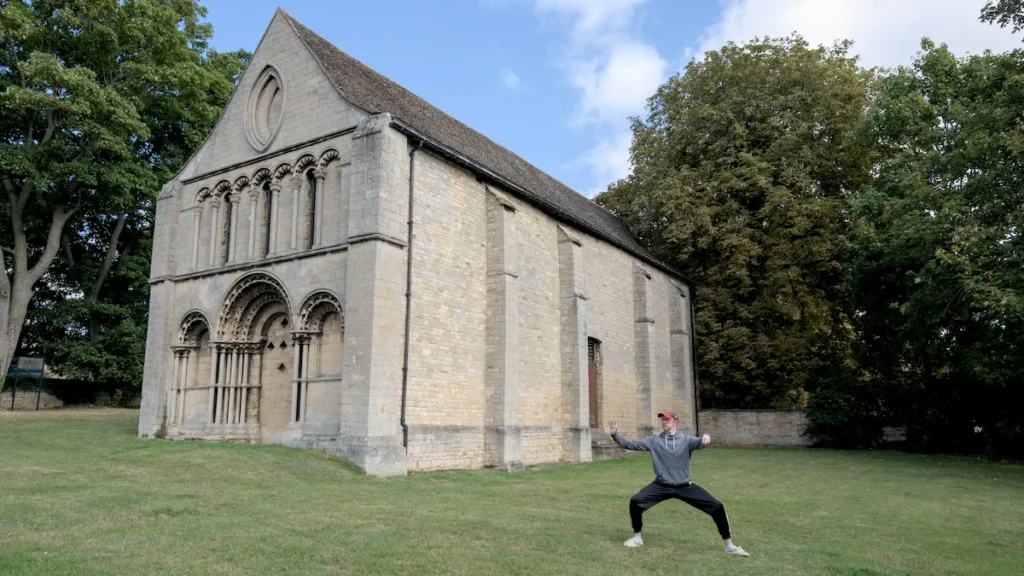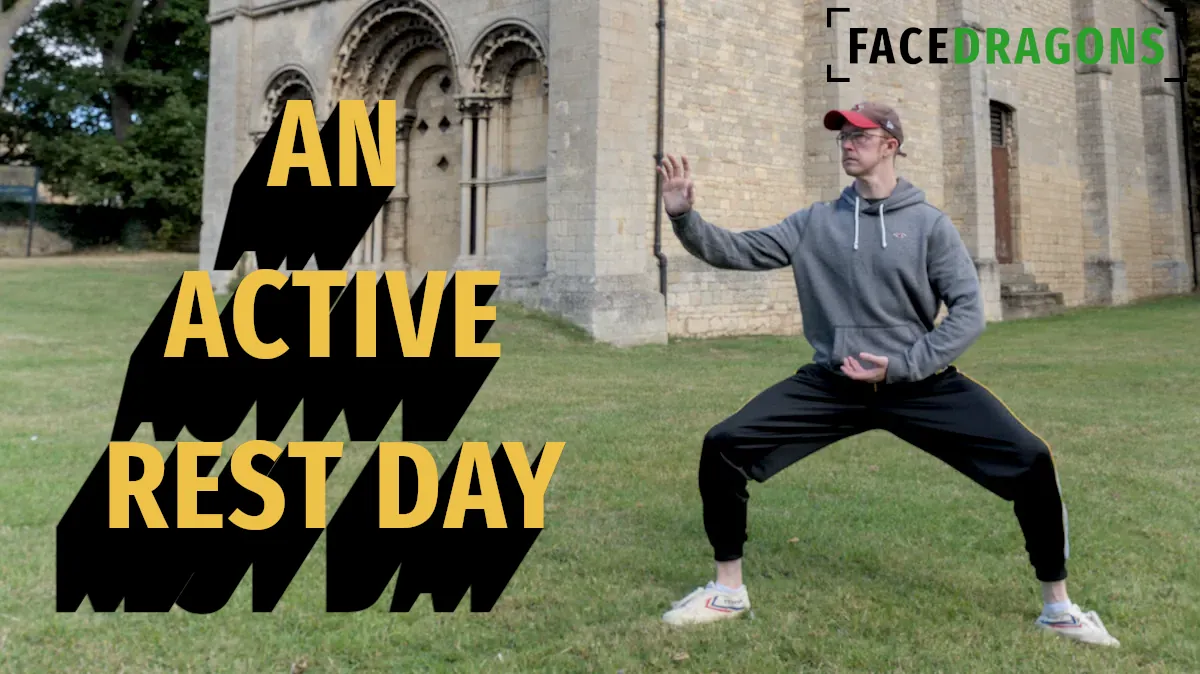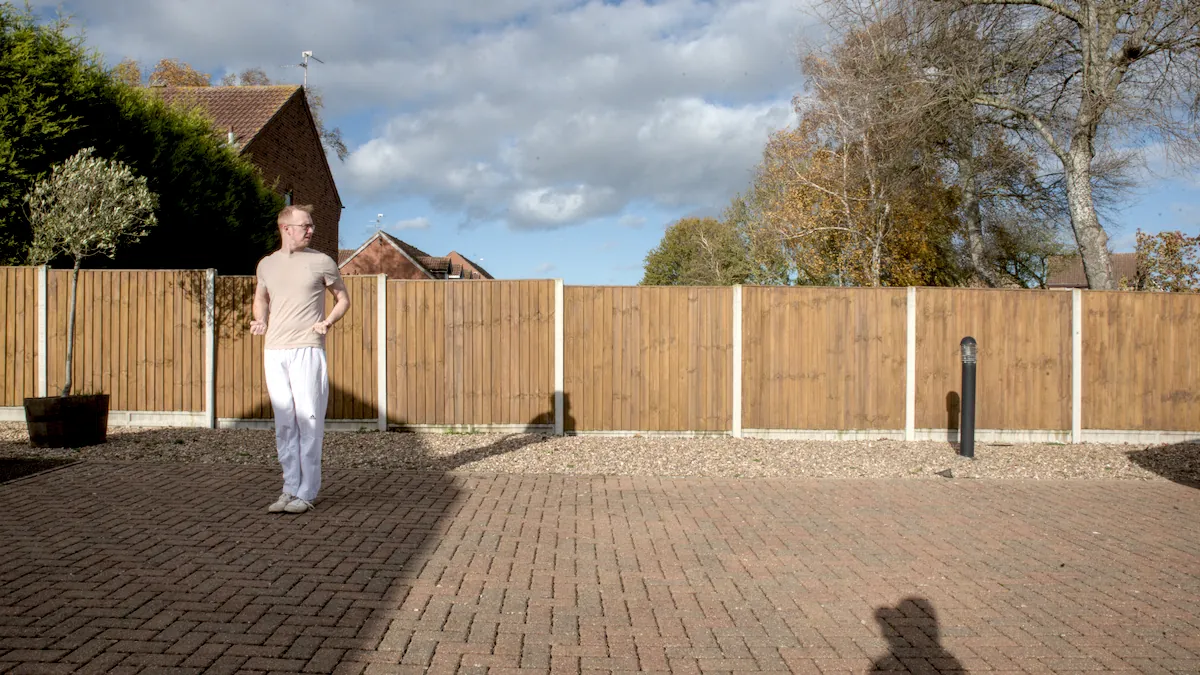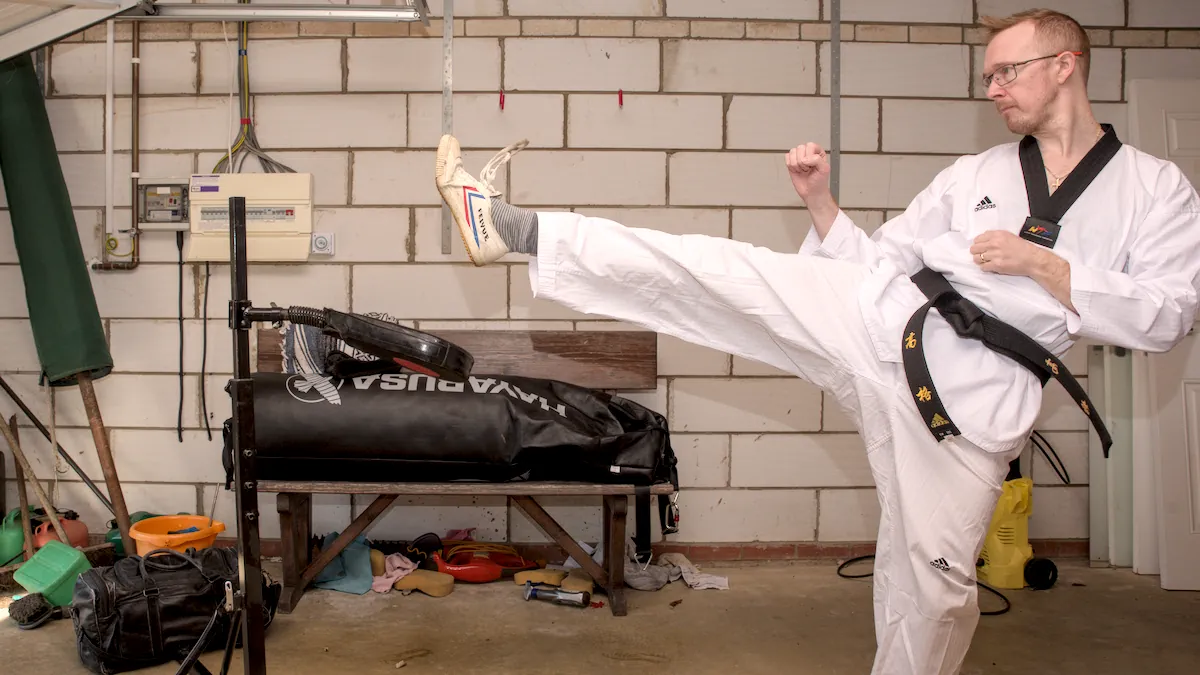A few times each week, I walk five minutes on a muddy grass track beside a shy stream behind my house and arrive at an abandoned monastery. The grounds are always well maintained, and rarely do I see another person—it’s the perfect place to spend half an hour on my active rest days. Active rest days are something I wish I had focused on earlier. I’ve never walked back home regretting it.
I talk to people in the gym – the guy on the next bench or someone loading up a barbell for a heavy deadlift set – and I find that everyone is highly attached to the workout they do. They have their sets, reps, and intensity dialed in, they are doing extra accessory work to improve their shoulders or arms, they’re following a new split, or they have some reason for doing what they do. But when I ask them about what they do for recovery, I often hear the same thing – “Yeah, I really should be doing more of that.”
Most of us, myself included for many years, see rest days as a break from thinking about the gym, a day off after the hard work has been done. But when I started thinking about my rest days as a part of my workout plan, I began to see gains I didn’t know I was missing.
If you have locked down your workouts and nutrition and are looking for new ways to optimize your performance, read how I do it and consider adding some easy, active recovery into your schedule.
Active Recovery Beats Doing Nothing
You’ve put in all that hard grind time in the gym, you’ve broken down muscle fibers and wiped the sweat from black leather benches, you’ve calloused your hands on barbell knurling, and gotten more than your membership fees worth. Now is the time to let the body recover and grow. Now is the time for your hard work to turn into solid gains. Mess up your recovery, and your lifts might go down instead of up next week. Diet is a huge part of building muscle and recovering fully between workouts, but everyone talks about diet – I want to focus instead on what you do on your days off.
Of course, the temptation is to do nothing – it’s a rest day, after all – but research shows that do-nothing rest days aren’t optimal. Want to make the most of your rest days? You need active rest days. That review is a meta-study that looked at and analyzed 150 potentially eligible studies between 1998 and 2014. They took in the results of as many studies as they could find concerning the effects of active recovery and found:
“The review demonstrated that AR interventions lasting 6-10 minutes revealed consistently positive effects on performance”
A Systematic Review on the Effectiveness of Active Recovery Interventions on Athletic Performance of Professional-, Collegiate-, and Competitive-Level Adult Athletes
Unfortunately, the study was only able to show that there was a benefit from doing some active recovery activity and not to explore what the optimum activities were. But, it’s simple enough to come up with a few reasonable ideas of what would make good active recovery.
- 1. It isn’t too intense – else it just becomes another workout.
- 2. It elevates your heart rate – increases in blood flow allow cells access to more nutrients.
- 3. It encourages relaxation – Actively relaxing the body has physical and psychological benefits.
- 4. It includes a gentle stretch – Regular stretching has been shown to increase strength and hypertrophy gains significantly.
So you want some gentle exercise which encourages relaxation and involves some stretching. Remember, however:
“Gains in strength seem to occur after 3 weeks of flexibility training, without any specific training for strength develop ment. [56,57] Therefore, evidence suggests that, although stretching exercises may have a negative acute effect on strength, this may not be the case after chronic stretching.”
This means you shouldn’t stretch immediately before your workout, but regular stretching will increase your strength gains. Stretching has other benefits too:
- Increases flexibility
- Strength and hypertrophy gains
- Injury prevention and recuperation
You may think then that yoga would be the ideal active recovery activity, and that could be true, however, most yoga classes I’ve attended are much longer and much more intense than the ideal active recovery prescription. A yoga class is more like another workout, not a rest. Perhaps if you did 15 minutes if gentle yoga at home it could work.
But there is something more ideal – it’s the perfect activity for your active rest days – Tai Chi.
Tai Chi Is the Perfect Recovery Exercise for Active Rest Days

I’ve practiced Tai Chi for over 25 years, and after learning two styles, training in China and learning from a lineage holder, I’ve found that nothing beats Tai Chi for active recovery days.
Going through my Chen-style Tai Chi routine takes about 15 minutes; it’s a balance between hard and soft, slow and fast. When I finally put my hands by my sides and exhale, I can feel the good work it’s doing inside me. I usually walk back home with a slight glow, a small smile, and a loose feeling in my joints – I often wish the walk back home in my kung fu shoes was a little longer.
Why? Tai Chi has all the marks for active recovery. Despite a couple of fast movements (the occasional punch or kick,) tai chi forms are rarely too intense. They generally focus on slow-flowing hand movements, gentle steps, and turning waist movements. However, after a few minutes, you’ll feel your heart starting to pump some blood – especially if you practice with low stances. The emphasis on relaxation is also there; it might be a reminder to lower your shoulders, actively relax the muscles in the arms or chest, or use the breath to encourage whole-body relaxation.
The breath is usually coordinated with the movements in most tai chi forms, so you’ll find that every movement becomes a reminder to relax even further, sinking your weight further down toward the ground. This is why pushing a tai chi master often feels like trying to push a wall or tree.
You might not think of stretching when thinking of Tai Chi, but stretching is a vital aspect built into most Tai Chi forms. Whether crouching down in a low stance, “Snake Creeps Down,” or performing high kicks, Tai chi will give you some gentle isometric and ballistic stretching in the legs. Movements like “Fair Lady Shuttles” give you a great stretch across the back and shoulders; it’s probably my favorite movement in the Yang Style Tai Chi form, and for that reason. It comes near the end of the form, and I enjoy slowing down and focusing on the stretch – which I always need after a grueling week in the gym.
But there is something else you can get from your active rest days – a new slice of life – let me explain. If your life comprises the things you spend your time on, you get to build a new part of your life here. Becoming a person who practices yoga, hiking, tai chi, or pilates opens you up to some new experiences – believe me, I moved my whole life to China for two decades due to my love for Chinese martial arts. I met a yoga teacher who moved to Bali to learn and teach something that, for her, started as an evening class after work.
What My Active Rest Day Looks Like
- Focus on getting enough protein
- I limit my carb intake
- Stay hydrated and avoid alcohol
- I walk down to the monastery and do two Tai Chi forms
- I walk back (sometimes listening to an audiobook – it was 168 Hours by Laura Vanderkam yesterday)
- That’s it – I enjoy the rest of my day
Meet Gregory, a writer and the brains behind Face Dragons. He's the go-to guy for getting things done.
Gregory's been living the digital nomad life in Asia for as long as anyone can remember, helping clients smash their goals. He writes on topics like software, personal knowledge management (PKM), and personal development. When he's not writing, you'll catch him at the local MMA gym, nose buried in a book, or just chilling with the family.







